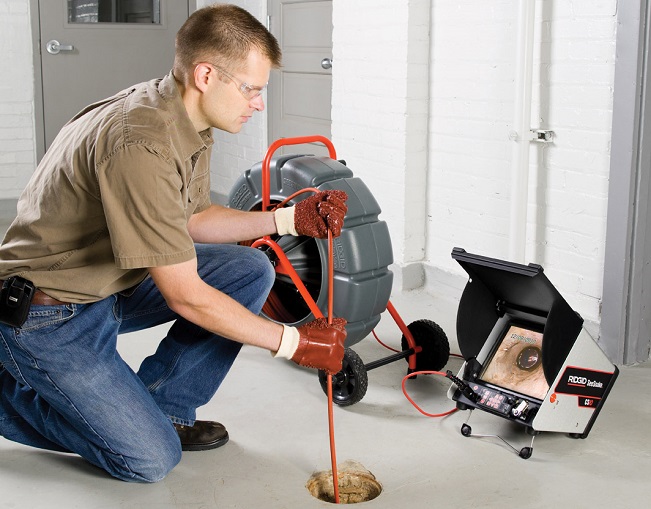All of the build up of grime, waste, and other unrecognizable but disgusting materials, make the insides of sewers some of the most difficult spots to inspect when even basic maintenance needs to be done. Sometimes when the sewer systems are wide enough, this is done by someone who actually goes into the muck in order to check for signs of damage or other wear and tear. However, a lot of the time the pipes are too narrow to even put your hands through, let alone go into, so instead of a person, a specialized piece of equipment like the Ridgid Sewer camera is deployed.

The one function of the Ridgid sewer camera is to allow the person that is operating it to get a good view inside those tight and hard-to-reach places in the sewers and pipes. With most of these devices you can both do a close inspection while you are operating it and record the inspection process to watch it again later. This means that it not only allows for a precise look at any potential problem you might find underground, but it also gives you the option to view the footage several times later if you want to check whether you might have missed something.
The sewer camera comes with a small monitor and usually a joystick that enables you to move the head in which the lens of the camera is placed. There is also the length of cable that leads from the lens to the control device, which can come in a variety of different sizes depending on the exact task at hand. For example, if the problem is located within a small length that can easily be reached, then you don’t need anything more than a small handheld in order to tackle the issue. If however, you need a cable that is a bit longer, you can also get a model that has a garden hose length cable for those clogs or issues that are located deep in a particularly big pipe.
If you want your equipment to be reliable, then there really is no other way except to spend a bit more money on it. I understand that this may be a problem if you are on a limited budget and might not think it is a good investment, but the difference between a cheaper and a more costly model is honestly clear as day. You will want the monitor to display the feed from the camera in higher definition, you will want the lens to be able to capture every detail of an area clearly, and you will definitely want the cable to be strong and waterproof. While I am sure that you can find a cheaper version that promises the same qualities as a high-end model, in the long run it will unfortunately be more likely to break down after continual use and fail you when you need it most!
























